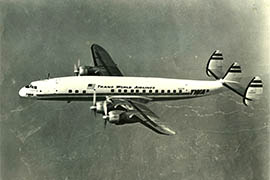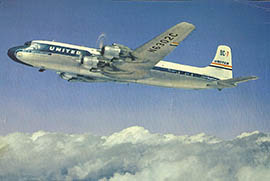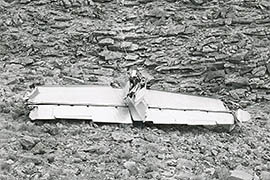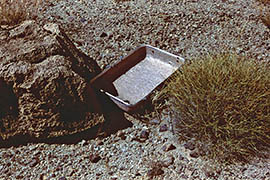Cronkite News has moved to a new home at cronkitenews.azpbs.org. Use this site to search archives from 2011 to May 2015. You can search the new site for current stories.
Park Service grants landmark status to site of 1950s Grand Canyon crash
PHOENIX – On the morning of June 30, 1956, a Trans World Airlines L-1049 Super Constellation and a United Airlines DC-7 collided 21,000 feet over the Grand Canyon, near the confluence of the Colorado and Little Colorado rivers. All 128 people aboard the planes died.
Marshall Trimble, Arizona’s state historian, was 17 when he heard the news on a car radio. He and his date looked at each other in shock.
“I think something like two planes colliding over the Grand Canyon was something that people thought couldn’t happen, but it did happen,” he said.
It was the deadliest civilian plane crash to date, and its fallout resulted in modern air traffic control and the establishment of the Federal Aviation Administration. Some wreckage from that tragic day can still be found in the canyon despite a cleanup effort in the 1970s.
On Wednesday, April 23, the National Park Service designated the site as a national historic landmark in recognition of its place in U.S. history.
“This site really honors what we learned and how American society changed as a result of that accident,” said Mike Litterst, a spokesman for the agency.
The planes took off within three minutes of each other from the Los Angeles International Airport, the TWA flight bound for Kansas City and the United flight on its way to Chicago. Flight controllers instructed the TWA plane to fly at 19,000 feet and the United plane at 21,000 feet.
Jon Proctor, a retired TWA flight service manager and an aviation journalist who has written about the crash, said both planes were off their routes at the time, most likely giving passengers a view of the canyon.
The pilot of the TWA plane reported turbulence and asked a control center for permission to go up to 21,000 feet. Because the United plane was in the area and at that altitude, the center said no.
The TWA pilot then asked for permission to ascend to 1,000 feet above cloud level, a fairly common practice. The center approved but warned the pilot, who was operating under visual flight rules, to keep an eye out for the United plane.
Proctor said visibility was limited at the time and that it’s likely the pilots didn’t see the other plane, least until right before impact. The United plane overtook the TWA plane at a slight angle, its left wing crashing into the TWA plane’s tail.
A radio transmission deciphered weeks later said: “Salt Lake, United 718 … ah … we’re going in.”
The main impact sites were along the Colorado River near Chuar Butte and Temple Butte.
With air traffic increasing dramatically, the Grand Canyon crash helped prompt Congress to pass the 1958 Federal Aviation Act, which established the Federal Aviation Administration, improved the air traffic control system and tightened flight rules.
“This accident woke up the industry, it really did,” Proctor said.
“The big concern too with this accident was just the fact that it could happen,” he added.
Sixty-four sets of remains from the TWA flight that couldn’t be identified were buried in a mass grave in Flagstaff. Twenty-nine sets of remains from the United flight that couldn’t be identified are buried at the Grand Canyon Pioneer Cemetery on the South Rim.
Despite the cleanup in the 1970s, some debris can still be found in the area.
Dennis Foster, a Northern Arizona University economics professor and avid Grand Canyon hiker, said he came upon some in 1984.
“I was hiking through there and we came to a little ravine that we crossed, and in the ravine there was still human remains and some other stuff,” he said. “There was a porthole to a window and part of a suitcase.”
Trimble said he’s glad the park service is honoring the site’s place in U.S. history.
“I think we should never forget,” he said. “These were people, and I think we should remember a great tragedy occurred here.”












